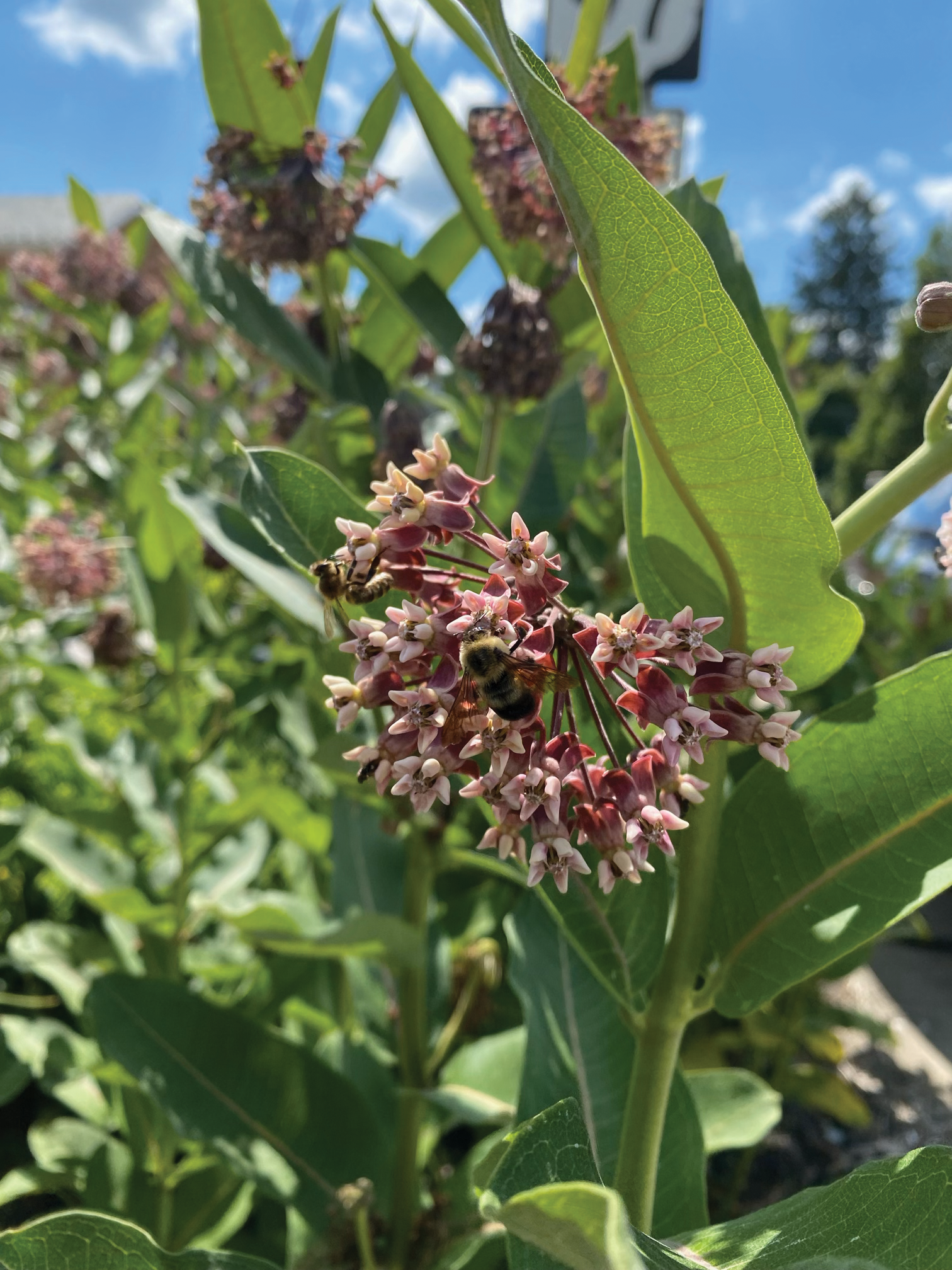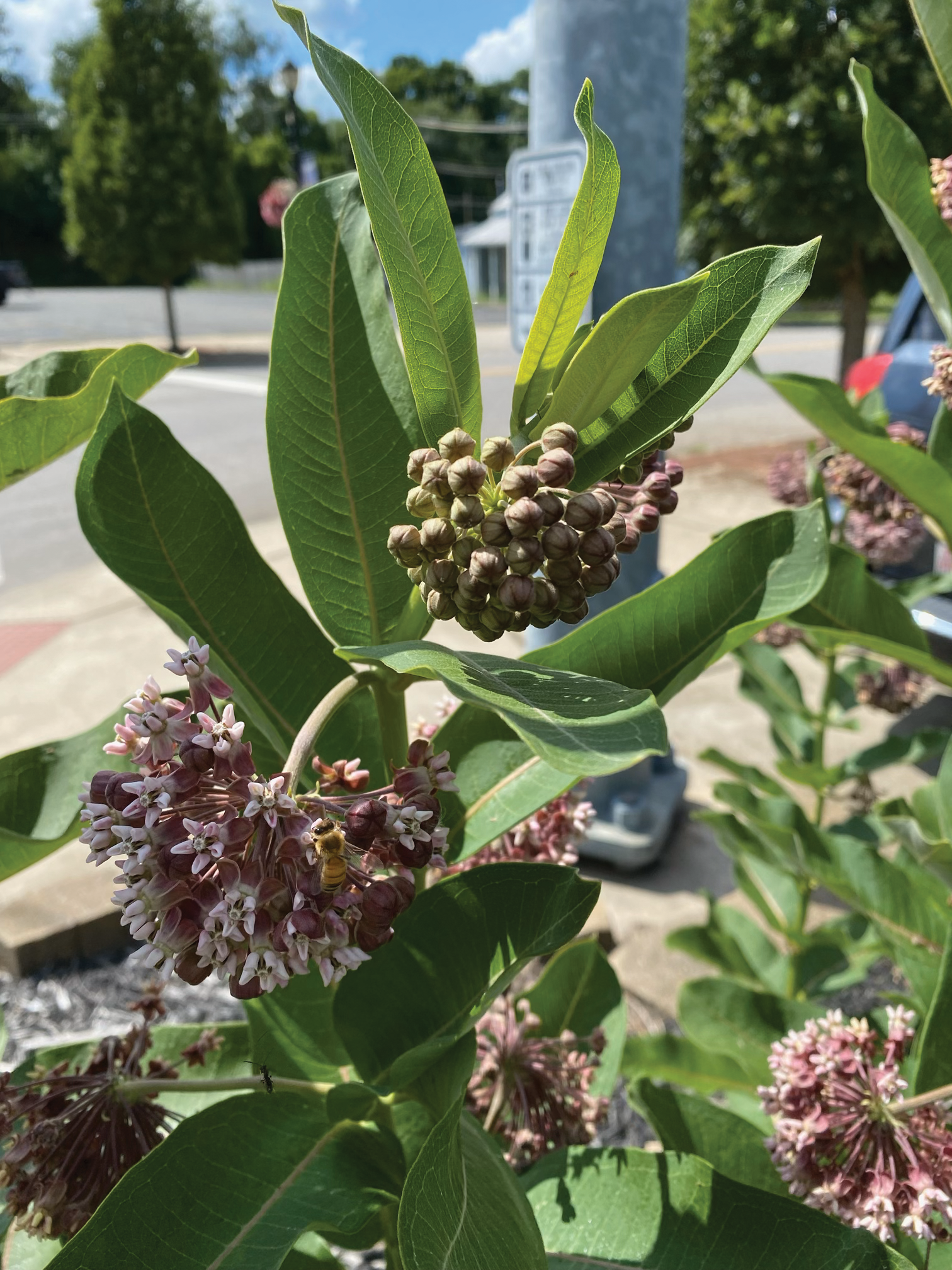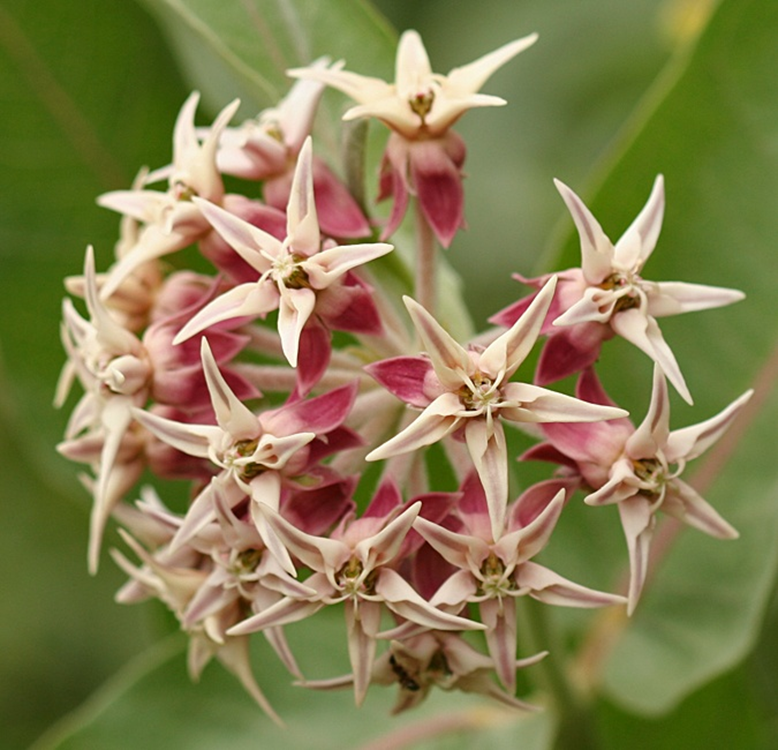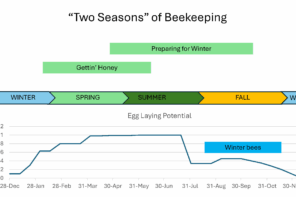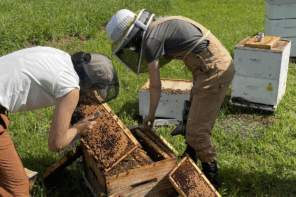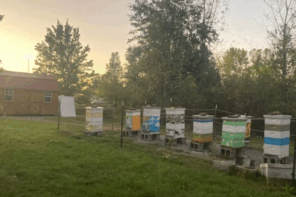By: Alyssum Flowers
Although milkweed has often been considered a weed, and to farmers, an annoying nuisance, it has recently enjoyed new respect and attention due to our desire to “save the Monarch Butterfly”. The Common name of Milkweed is derived from the milky sap in the stem which contains cardiac glycosides – toxins that render the monarch caterpillar and adult bitter to its predators. In fact, the bitter taste of the orange and black coloring of the butterfly is so strongly stamped as “nasty” to birds that some other “edible” insects mimic this coloring to avoid being someone’s dinner.
Interestingly, the Genus Asclepias is derived from Asclepius, the Greek god of medicine and healing. According to Greek mythology, Asclepius was taught the art of healing and known for his ability to cure diseases and bring the dead back to life. He is often shown holding a staff with a snake coiled around it which is the universal symbol of medicine. Although Native Americans and early settlers used parts of milkweed to treat stomach ailments and swelling, a little bit goes a long way as even small amounts can be lethal to smaller animals and children, or even adults if they consume too much. It is this substance that protects the early instars of monarch caterpillars and the butterflies.
Although the milkweed itself may be able to provide protection for monarchs, urbanization and deforestation negate and impair the monarchs’ efforts to produce viable offspring, successfully overwinter and return their migration north. Overwintering populations both in Mexico and the western coast of southern California continue plummet as the sites in which they congregate fall to timber production, urban “development”, and environmental factors.
Monarch groups as well as federal and local wildlife organizations are encouraging everyone to plant milkweeds to help monarchs have food for the larvae and hopefully increase the number of adults to fly south for the Winter. But its not just the monarchs that benefit from milkweed plants. Many pollinators obtain nectar from the flowers, including honey bees and other bees. Indeed, milkweeds bloom at a time when many plants have ceased flowering. Milkweeds will even bloom during a dearth in poor dry soil, or rocky stubble along roadsides.
Because of the high sugar content of the nectar, honey bees are strongly attracted to the flowers and in areas where milkweed abounds, a mild and sweet honey can be harvested. Large butterflies as well as skippers, beetles, wasps and many solitary bees will appreciate this nutritious treat.
Common milkweed, Asclepias syriaca is probably the easiest species milkweed to start, but plant it where it is allowed to spread or an area that is restricted. Cut the top third of the plants in August if they start to get woody. This will encourage new growth and attract Monarchs for the last generation. Let the plants bloom then collect the seed pods and either plant them or donate to a park or a local group that collects the pods (soil and water conservation districts, local NWF, departments of transportation, etc.).
Butterflyweed, Asclepias tuberosa grows easily once established and displays bright orange flowers on top of narrow green, spiraling leaves. Because of the dense tuberous roots, it grows as a thick cluster, like a bush, bearing flowers from May through September and can reach one to three feet tall. It does well in dry, rocky soil and is often found growing wild on the south and east banks along highways.
https://www.birdsandblooms.com/gardening/attracting-butterflies/milkweed-guide/
https://blog.nwf.org/2015/02/twelve-native-milkweeds-for-monarchs/
https://www.michiganflora.net/genus/Asclepias
https://www.poison.org/articles/milkweed-can-cause-serious-poisoning-204
https://www.monarchwatch.org/
https://extension.illinois.edu/blogs/good-growing/2021-07-30-more-monarchs-what-are-those-bugs-my-milkweed







